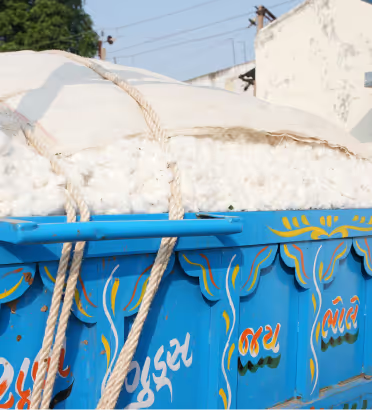





WELCOME TO YOUR COTTON SUPPLY CHAIN
Explore the clusters that grow regenerative cotton
Materra supports different communities from the ground-up to grow regenerative cotton. Although each cluster here is transitioning to more sustainable farming, the climate, conditions and socio-economic landscape of each location varies. Click to learn more about the clusters we work with, and discover their farmers’ unique practices and the types of crops they grow.

Jalna
Located in the hot, semi-arid ecoregion of Central Maharashtra, this district is at the heart of India’s cotton belt. Other crops include chickpea, sorghum, and horticulture crops. Recently, our field executives held a farmers workshop here on different regenerative practices, such as minimum tillage and intercropping.

Grambharti
A small village in the state of Gujarat, home to a semi-arid climate with sandy loam soils suitable for a wide variety of crops. Besides cotton, the farmers here grow castor, potato, groundnut and wheat. Families also supplement their income through dairy-farming and animal husbandry.

Wardha
This district in Maharashtra is known for its hot, semi-arid climate, as well as its higher levels of biodiversity in the region. Nearly half of our farmers in Wardha grow intercrops such as pigeon pea and soya, with many receiving additional support by the state agricultural department’s Project on Climate Resilient Agriculture.

Sendhwa
This cluster is found in the Barwani district of Madhya Pradesh, characterised by its undulating hills and subtropical climate. Farmers here also grow maize, soybean and pearl millet, with agriculture being their main source of income. Currently, Materra is building soil fertility in the area through green manure and biomass.

Jambusar
Jambusar Taluka is a town bordered by the Mahi River to the North, and the Dhadhar River to the South. Despite lower levels of education, women farmers are highly active here, running self-help groups to prepare organic inputs. This year, Materra has supported town farmers by adding storage facilities and living fences.








.jpg)



.jpg)

%20(1).png)


.png)


